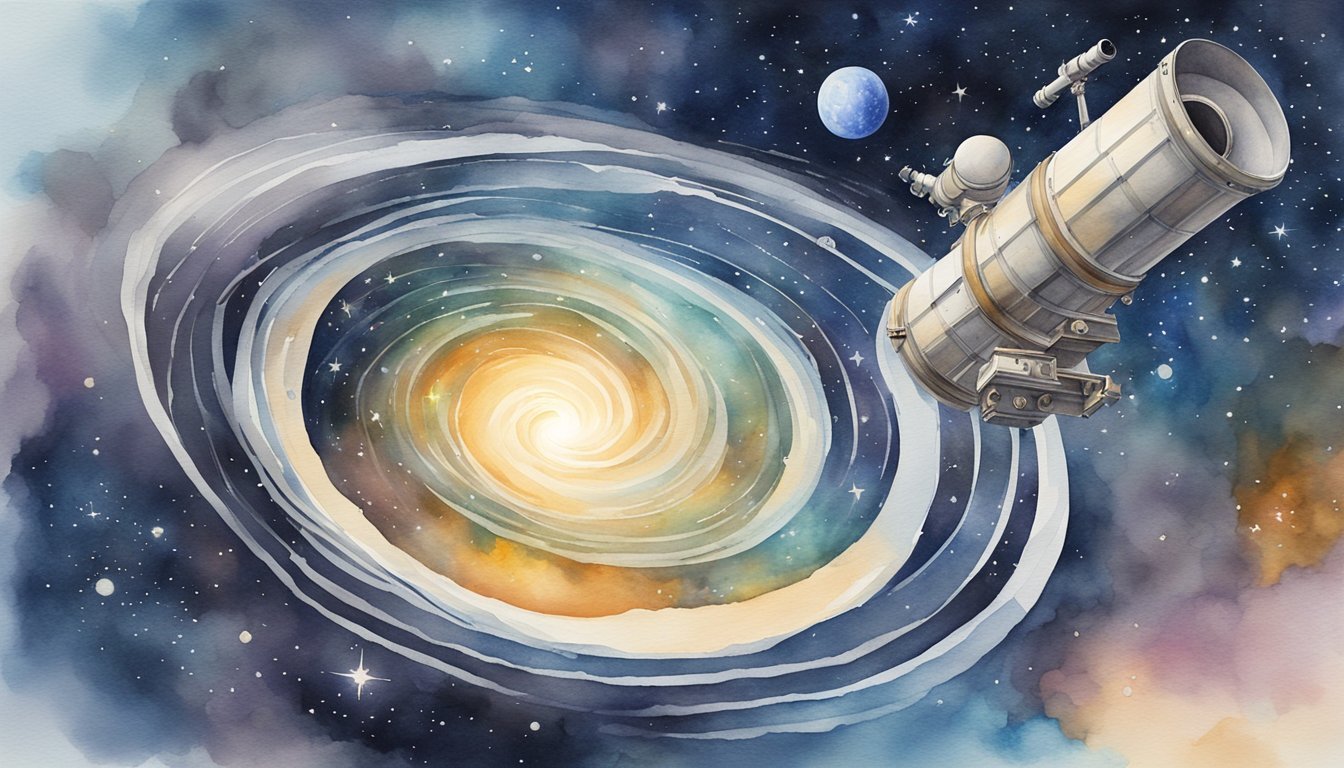Exploring the Depths of the Cosmos

Recent advancements in space technology have unlocked unprecedented vistas of the Universe, offering new insights into the cosmos’ earliest days and the enigmatic nature of black holes.
Innovations in Telescope Technology
The James Webb Space Telescope (JWST), inheriting the legacy of the formidable Hubble Space Telescope, represents a quantum leap in space observatory technology. It is a result of international collaboration led by NASA, with critical contributions from the European Space Agency and the Canadian Space Agency. Harnessing the power of its primary mirror and scientific instruments like the Near-Infrared Camera (NIRCam), JWST operates primarily in the infrared light spectrum, allowing it to look further back in time than any telescope before.
The JWST’s comprehensive suite of instruments, including NIRCam, zooms in on the universe with a resolution and sensitivity that dwarfs its predecessors, capturing the cosmos in astonishing detail. This $10 billion investment probes the universe’s infancy, examining the formation of celestial bodies and potentially uncovering new branches of astrophysics.
The Quest for the Earliest Galaxies
Astronomers have long sought to understand how the first galaxies formed, and the JWST plays a pivotal role in this quest. Using its powerful near-infrared capabilities, scientists can now scrutinize nearly 200 deep-space galaxies and clusters, mapping distances unimaginable until now. These findings provide invaluable data on how galaxies, including our own Milky Way, came into existence and evolved over 13 billion years ago.
Deciphering the Mysteries of Black Holes
The intrigue surrounding black holes, regions of spacetime where gravity is so extreme that nothing can escape from it, has only deepened with recent discoveries. The JWST’s unparalleled infrared sight pierces through cosmic dust to yield vital clues about the structure and behavior of these mysterious phenomena. This includes new findings on dense celestial objects like the enigmatic dust cloud known as ‘The Brick‘ at the center of our galaxy, which poses significant questions about the nature of the dense matter governing these dark titans.
Advancing Our Knowledge of Exoplanetary Systems
Recent discoveries have broadened our understanding of exoplanetary systems through detailed atmospheric characterizations and AI-powered discoveries, signaling a new era for future space missions and observatories.
Characterizing Exoplanetary Atmospheres
Scientists have recently made striking advancements in characterizing the atmospheres of exoplanets. The James Webb Space Telescope has revealed unprecedented details of an exoplanet’s atmosphere, including the first detection of sulfur dioxide (SO2). This finding sheds light on the atmospheric composition and climate of exoplanets like K2-18 b, which could harbor water vapor and perhaps even ice in their clouds. Understanding the atmospheric conditions, such as the presence of hydrogen, methane, or carbon dioxide, is crucial to assessing the potential for habitability of these distant worlds.
The Role of AI in Discovering New Worlds
Artificial Intelligence (AI) plays a transformative role in the hunt for new exoplanets. Complex algorithms analyze data from telescopes, such as the Transiting Exoplanet Survey Satellite (TESS), to identify the minuscule dips in brightness of stars that indicate a planet transiting across them. This approach has enabled the discovery of planets orbiting red dwarf stars and has expanded the catalog of known exoplanets dramatically. AI’s capability to sift through vast amounts of data is revolutionizing how astronomers identify planets and study their characteristics.
Future Missions and Space Observatories
Anticipation is building for future missions and observatories that will continue to enhance our knowledge of exoplanetary systems. Upcoming space telescopes are poised to examine the compositions of exoplanet atmospheres in detail, while missions to the outer planets in our own solar system, like Jupiter and Saturn, may explore moons like Europa, known for its subsurface ocean. Furthermore, the study of asteroids in our solar system can inform our understanding of the building blocks of planet formation. These explorations extend beyond our galaxy, as astronomers utilize telescopes like Webb to observe exoplanets in distant galaxies, propelling our comprehension of the universe’s myriad planetary systems.

